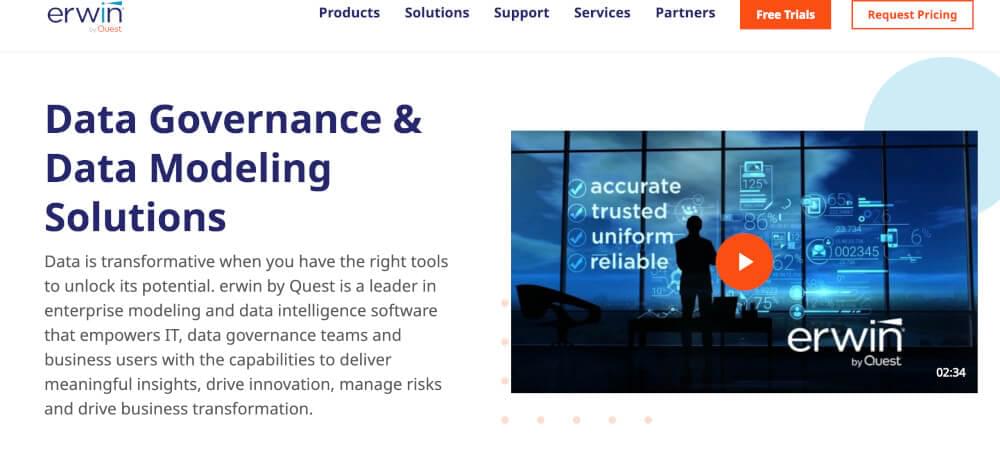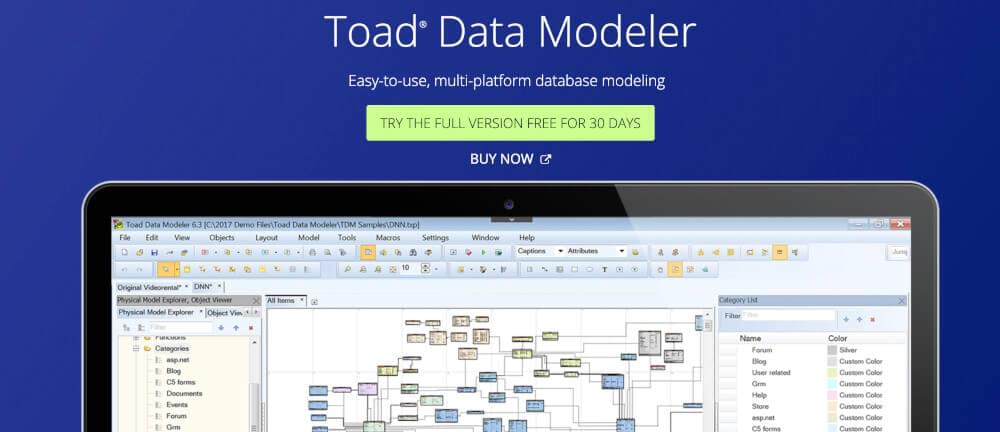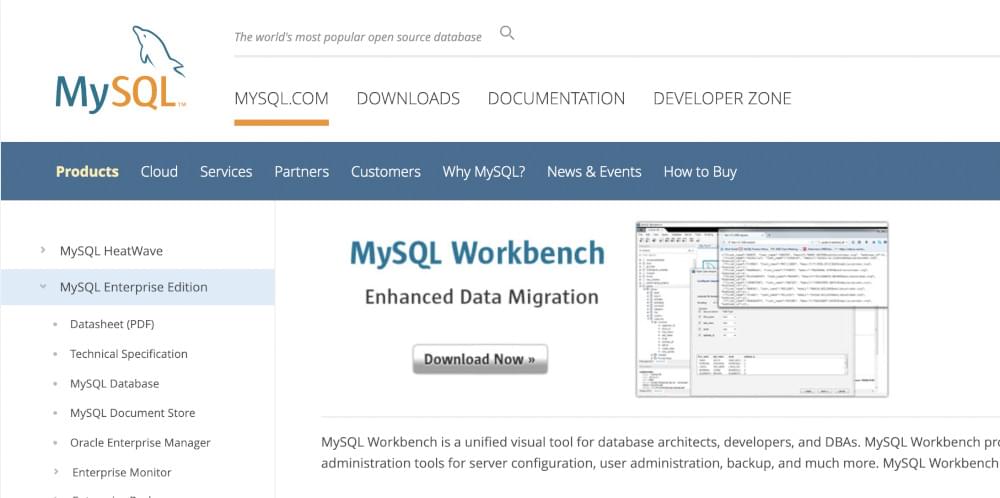Data modeling can be considered the foundational stone of data analytics and data science. It gives meaning to the enormous amount of data that organizations produce. It generates an effectively organized representation of the data to assist the organizations with better insights into data understanding and analysis.
The domain of data utilization is vast beyond the limitations of a human. It is being used as a source for personalized social media advertisement, discovering treatments for numerous diseases, and more. The data is readable by software machines but generates significant results with maximized accuracy. It simplifies the data by implementing rational rules assignment.
The task of getting the required data, transforming it into an understandable representation, and using it as needed for the average user is simplified through data modeling. It plays a pivotal role in transforming data into valuable analytics that helps organizations make business strategies and essential decisions in this fast-paced era of transformation.
Data modeling provides in-depth insights into organizations’ daily data despite the process’s complexity. It helps organizations in efficient and innovative business growth.
Data Modeling Definition
Let us understand what data modeling is. So, data modeling conceptualizes the data and relationships among data entities in any sphere. It describes the data structure, organization, storage methods, and constraints of the data.
Data modeling promotes uniformity in naming, rules, meanings, and security, ultimately improving data analysis. These models represent data conceptually using symbols, text, or diagrams to visualize relationships. The main goal is to make the data available and organized however it is used.
Data modeling helps store and organize data to fulfill business needs and allow for the processing and retrieving of information of use. Thus, it is a crucial element in designing and developing information systems.
Firstly, data modeling signifies the arrangements of the data that already exist. Then this process proceeds to define the data structure, relationship of entities, and data scope that is reusable and can be encrypted.
Data modeling creates a conceptual representation of data and its relationships to other data within a specific domain. It involves defining the structure, relationships, constraints, and rules of data to understand and organize information meaningfully. So, data modeling conceptualizes the data and relationships among data entities in any sphere. It describes the data structure, organization, storage methods, and constraints of the data.
- Data modeling promotes uniformity in naming, rules, meanings, and security, ultimately improving data analysis. These models represent data conceptually using symbols, text, or diagrams to visualize relationships. The main goal is to make the data available and organized however it is used.
- Data modeling helps store and organize data to fulfill business needs and allow for the processing and retrieving of information of use. Thus, it is a crucial element in designing and developing information systems.
- Data modeling signifies the data arrangements of the data that already exist. Then this process proceeds to define the data structure, relationship of entities, and data scope that is reusable and can be encrypted.
- Data modeling creates a conceptual representation of data and its relationships to other data within a specific domain. It involves defining the structure, relationships, constraints, and rules of data to understand and organize information meaningfully.
Data modeling is essential in software engineering, database design, and other fields that require the organization and analysis of large amounts of data. It enables developers to create accurate, efficient, and scalable systems by ensuring the data is properly structured, normalized, and stored to support the organization’s business requirements.
Importance of Data Modeling
Data modeling is the stepping stone of the data management process to achieve business objectives and other essential utilization. It is the fundamental phase of the data management process to achieve crucial business objectives and other vital usages that assist in decision-making driven by data analysis.
The following insights can help comprehend the importance of data modeling.
- We may comprehend the data structure, relationships, and limitations by building a data model.
- By making it easier to ensure everyone working on the project is familiar with the data.
- You can avoid uncertainties and inaccuracies.
- Data continuity, reliability, and validity are improved by addressing issues.
- Provides a common language and a framework or schema for better data management practices.
- Processing insights from raw data to discover patterns, trends, and relationships in data.
- Improved data storage efficiency to cancel out useless data.
- Streamlined data retrieval with organized storage.
- Good database schema designs can significantly reduce data redundancy issues.
- Cost efficiency and an increase in system performance due to reduced and optimized data storage.
Steps of the Data Modeling Process
What we select to make a data model depends mainly on the data characteristics and the individual business requirements. The steps of the data modeling process for data engineering include the following:
Step 1: Requirements gathering
Gathering requirements from analysts, developers, and other stakeholders and then realizing how they need the data, how they plan to use it, and any blockers they face regarding the quality or other data specifics.
Step 2: Conceptual data modeling
In this step, you must map entities, attributes, and the relationship among them in a generalized concept of understanding the data.
Step 3: Logical data modeling
The third step of the data modeling process is to develop a logical interpretation of the data entities and the relationship among them. The logical rules definition is also defined in this step.
Step 4: Physical data modeling
A database based on the logical rules defined in the previous step is implemented physically, where attributes are defined with primary and foreign keys of a data entity table.
Types of Data Modeling

Below are the types of data modeling that are being implemented:
1. Conceptual Data Modeling
Data entities are modeled as high-level entities with relationships when using this method. Rather than focusing on specific technologies or implementations, it focuses on business needs.
2. Logical Data Modeling
This type of data modeling focuses on just the high-level view of the data entities and relationships. It has comprehensive data models in which entities, relationships, and attributes are stipulated in detail, along with constraints and implementation rules.
3. Physical Data Modeling
It is the type of data modeling in which the model is defined physically, constituting tables, database objects, data in tables and columns, and indexes defined appropriately. It mainly focuses on the physical storage of data, data access requirements, and other database management.
4. Dimensional Data Modeling
Dimensional data modeling requires data arrangement into ‘facts’ and ‘dimensions.’ Where ‘facts’ mean metrics of interest and ‘dimensions’ mean attributes for facts’ context
5. Object-Oriented Data Modeling
This specific data model is based on realistic scenarios represented as objects and independent attributes, with several relationships in between.
Data Modeling Techniques
Several techniques are used to model data, of which some are and would tell you what is data modeling in general:
1. Entity-relationship Modeling
This technique uses entities and relationships to represent their associations to perform conceptual data modeling. It utilizes subtypes and supertypes to represent hierarchies of entities that share common attributes and distinct properties, cardinality constraints to identify the number of entities that can take part in a relationship and are expressed in the form of symbols, weak entities depend on another entity for existence, recursive relationships that occur when an entity has a relationship with itself and attributes to help describe entities and are their properties.
2. Object-oriented Modeling
Object-oriented data modeling is linked to relational databases and broadly used in software development and data engineering. It represents data as objects with attributes and behaviors, and relationships between objects are defined by inheritance, composition, or association.
3. NoSQL Modeling
NoSQL modeling is a technique that uses non-relational databases to store semi-structured, flexible data in an unstructured format which usually utilizes key-value pairs, documents, or graph structures. Since the database is non-relational, the modeling technique implemented differs from relational database modeling techniques. With column-family modeling, data is usually stored as columns where each column family is a group of relevant columns. With graph modeling, data is usually stored as nodes and edges which represent entities and the relationship between entities, respectively.
4. Unified Modeling Language (UML) Modeling
A data modeling technique that uses visual modeling to describe software systems with diagrams and models and is used for complex data flow modeling and for defining relationships between multiple data entities. Used as a standard to visualize, design, and document systems, it constitutes dynamic diagrams like sequence, class, and use case diagrams used to model data and system behavior. One possible way to extend UML is by using class diagrams and by representing data entities and their attributes.
5. Data Flow Modeling
Data flow among different processes utilizes the data flow modeling technique, constituting different diagrams showing how a process and its sub-processes are interlinked and how the data flows in between.
6. Data Warehousing Modeling
This technique is used to design data warehouses and data marts, which are used for business intelligence and reporting. It involves creating dimensional models that organize data into facts and dimensions and creating a star or snowflake schema that supports efficient querying and reporting.
Each method has its own pros and cons. Ensure that the technique you use is per your project’s requirements and the data available.
Data Modeling Use Cases
Data modeling is used in various industries and contexts to support various business objectives. Some everyday use cases of data modeling include:
- Predictive Modeling: Creating a statistical or mathematical model to predict the future based on data for sales forecasting, resource allocation, quality controlling and demand planning. Identifying new patterns and relationships will lead to new insights and possibly better opportunities.
- Customer Segmentation: Through the division of customers into different groups on the basis of behaviors, preferences, demographics or other characteristics, you can do customer segmentation which is a popular data modeling use case.
- Fraud Detection: Identifying fraudulent activities by analyzing patterns and data inconsistency is now possible due to data models that can detect fraud patterns like an individual filing multiple claims immediately after they get the policy.
- Recommendation Engines: Recommendation engines for eCommerce, search engines, movies, and TV shows, and many more industries use data models that rely on quick data access, storage and manipulation which keeps them up-to-date at all times without affecting the performance and user experience.
- Natural Language Processing: Utilizing topic modeling that auto-learns to analyze word clusters through text and Named Entity Recognition (NER) that detects and classifies significant information from text, we can perform Natural Language Processing (NLP) on social media, messaging apps and other data sources.
- Data governance: A process of ensuring that a company’s data is extracted, stored, processed and discarded as per data governance policies. It has a data quality management process to ensure monitoring and improvement of data gathering. Tracking data from the original state to a final state, maintaining metadata that ensures a track record of data for accuracy and completion, ensuring data security and compliance. Data stewards are responsible for the integrity and accuracy of specific data sets.
- Data integration: If any data has ambiguity or inconsistency, then the data integration use case is ideal for identifying those gaps and modeling the data entities, attributes, and relationships into a database.
- Application development: Data modeling plays a key role in data management and intelligence reports, data filtration, and other uses while developing web applications, mobile apps, and dynamic user experience interfaces like business intelligence applications and data dashboards. Data modeling is a versatile tool supporting various business objectives, from database design to data governance and application development.
Also, see: How to Download Images from Amazon? Tools and Tips Explained
Tips for Effective Data Modeling
Practical data modeling tips are as follows:
1. Identify the purpose and scope of the data model
To build a data model that not only addresses users’ needs but also high-performance and scalable, you need to know what problem it is solving, the data sources for the model, the type of data the model would store, the kind of people who would be using the model, level of details required for them, key entities, attributes and their relationships. You would also need to address the data quality requirements by all stakeholders.
2. Involve stakeholders and subject matter experts
Involving stakeholders and subject matter experts is crucial when designing a data model as they provide valuable insight into the business needs and can help identify potential issues early on.
3. Follow best practices and standards
There are a few things that you need to make sure are right and up to their standards when creating a data model. Firstly, choose an industry-wide accepted standardized modeling notations like Entity-Relationship (ER) diagrams, and Unified Modeling Language (UML), Business Process Model and Notation (BPMN), etc consistently to make sure things are clear and understandable.
4. Use a collaborative approach
Make sure you encourage stakeholders to let you know of their input in the form of thoughts and opinions so that all outlooks are considered. All stakeholders including IT staff, subject matters, end-users, etc are represented to maintain group diversity. Use diagrams and flowcharts to help stakeholders understand data model and give feedback in an efficient manner. Regularly schedule meetings to discuss progress, review blockers or concerns and give an update to all stakeholders.
5. Document and communicate the data model
Documenting business requirements play a vital role when a project is initiated. In the first step, when requirements are gathered and analyzed, it is important to map them in official documents. Similarly, documenting a data model is important when implementing a collaborative approach because it provides coherent guidelines to the teammates working on a project.
Avoid using technical jargon and acronyms that all stakeholders are not familiar with. Instead, use clear and concise language to define data model and its components. Use diagrams and flowcharts with a standardized notation to explain data model of how it relates to business processes to the stakeholders.
Official documents of data models bridge the communication gap between application developers and stakeholders and bring everyone on a coherent approach of what has been implemented along with all data entities, attributes, relationships, and the rules defined on a logical layer of the data model. Overall, documenting and communicating the data model is an essential aspect of data modeling and helps to ensure its effectiveness and long-term viability.
Data Modeling Tools
A wide range of data modeling tools is being used for data modeling, out of which six are mentioned below:
1. ERwin:

A popular tool utilized by developers to create custom applications through its API which lets them create custom data modeling tools that can be integrated with ERwin to provide additional functionality for users. This allows the users to customize the tool as per their needs.
2. SAP PowerDesigner:

SAP PowerDesigner tool meant to be customized and used per the user’s specific needs. It has the option to use script in VBScript, JScript and PerlScript to automate tasks, apply validation rules and perform complex calculations. Adding macros to automate repetitive tasks can be done in a snap. Add-ins can be custom-developed using .NET or Java and interacted via API. Templates of data models define entities, attributes, relationships and other key elements. With the model extensions, a user can create custom extensions to store specific domain concepts and customize the tool as per their needs.
3. Oracle SQL Developer Data Modeler:

Oracle SQL Data Modeler is a powerful data models design and management tool that allows the user to create and alter data structures like ER diagrams, data types and constraints so the users may utilize it as needed. Custom plug-ins can be developed using Java to support custom reports, implement specific data modeling conventions, etc, and can be shared across teams for easier collaboration and to maintain a consistent data model.
4. Toad Data Modeler:

This tool supports relational and NoSQL data modeling, including entity relationship diagramming, reverse engineering, and database schema generation. It also supports integration with other data management tools like Toad for Oracle. According to db-engine, Oracle is the most used database management system.
5. Visio:

Microsoft Visio is a general-purpose diagramming tool that can use for data modeling. It includes templates for entity relationship diagrams, data flow diagrams, and other types commonly used in data modeling.
6. MySQL Workbench:

MySQL Workbench is an open-source tool explicitly designed to allow users to create and interact with MySQL databases by adding new features and functionalities like Entity-Relationship diagrams, forward and reverse engineering, and database schema generation.
Many other data modeling tools are available, and the choice of tool depends on the project’s specific requirements and the user’s preferences.
Benefits of Data Modeling
Data modeling has several benefits, including that data modeling can help ensure that the database is designed to quickly accommodate future growth and changes in business requirements. Data modeling assists in identifying data redundancies, errors, and irregularities for better insights.
It equips data scientists with an in-depth understanding of data structure, attributes of data, relationships, and constraints of the data. Data modeling also helps in data storage optimization, which plays a significant role in minimizing data storage costs.
Related: Best Web Scraping Tools For Data Gathering In 2023
Final Remarks
Finally, we shed light on the fact that data modeling is the stepping stone of the data management process to achieve business objectives and other essential utilization. We may comprehend the data structure, relationships, and limitations by building a data model.
By making it easier to ensure everyone working on the project is familiar with the data. It is the fundamental phase of the data management process to achieve crucial business objectives and other vital usages that assist in decision-making driven by data analysis.
You can avoid uncertainties and inaccuracies. Data continuity, reliability, and validity are improved by addressing issues. Provides a common language and a framework or schema for better data management practices.
The examples and discussion of this writing provided insight into how data modeling processes raw data to discover patterns, trends, and relationships in data. Also, it provides improved data storage efficiency to cancel out useless data.
Streamlined data retrieval with organized storage. By adopting best practices and leveraging the right tools and techniques, data professionals can help organizations unlock their data’s full potential, driving business growth and innovation.









